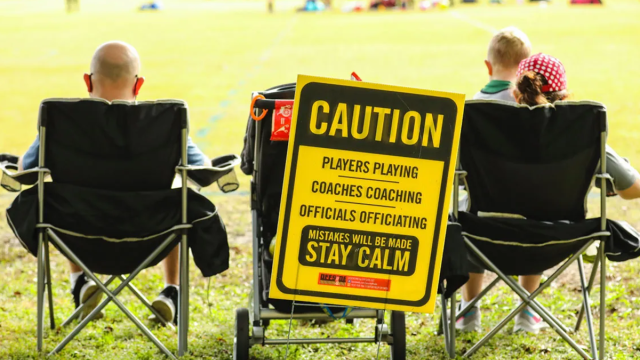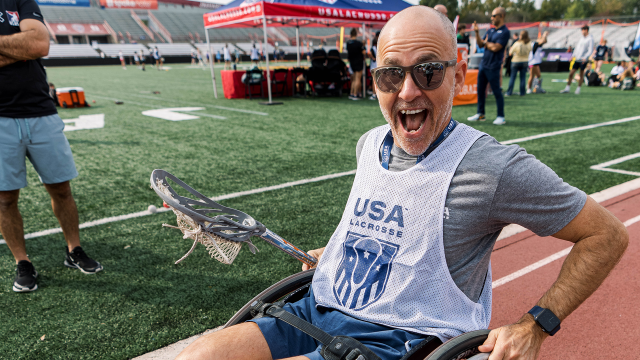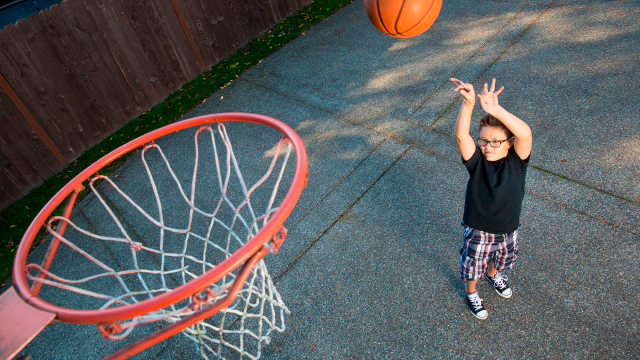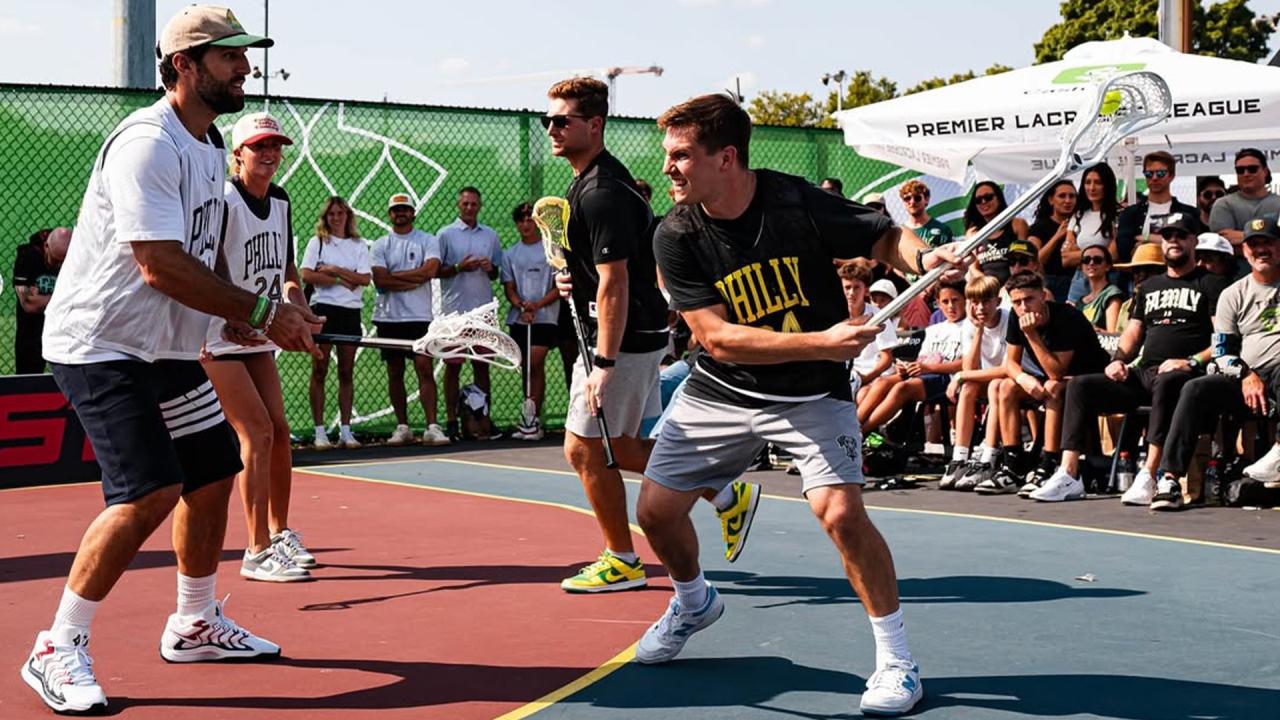
Michael Sowers Found Time for Free Play. So Should You.
Experts in athlete development have long advocated for free play — think pickup basketball or street hockey — as ways to build physical literacy, coordination, confidence and creativity.
It’s not just for kids.
Philadelphia Waterdogs and U.S. Men’s National Team athlete Michael Sowers wanted to get more out of his offseason training, so he contacted 3d Lacrosse and JM3 Sports founder Jamie Munro.
Munro set Sowers up with local high school players for unstructured sessions.
“I felt like I was plateauing in my training,” Sowers said. “You’re scraping together a few guys and shooting on your own. I felt like I could only get so much out of that.”
A staunch advocate for wall ball, Sowers wasn’t initially sold on the idea. However, after participating in several free-play sessions, Sowers noticed a difference in how he was reacting in games — particularly with his use of behind-the-back shots and passes.
“Free play allows you to train your decision-making,” Sowers said. “And that has not been the focus of training, historically. Maybe the free play isn’t the speed of a PLL game, but I’m still recognizing 3-on-2s and figuring out how to play more of a two-man game. I’m manipulating people with my eyes when I’m feeding or faking out the goalie. You’re working on your instincts.
“Lacrosse is a game of instincts and decision-making. I can do everything under the sun in a wall ball session, but I never threw a behind-the-back pass in a game until this year. It has to happen instinctually. And that was from playing so much free play in the offseason.”
A similar sentiment set social media alight in November when West Coast lacrosse legend Brian Kelly suggested that states with a fraction of the participation of California produce more elite players because they learn the game organically.
Ever wonder why California has the most lacrosse players in any US state aside from NY but doesn’t have a proportionate amount of the best players & high school teams?
Why do some states with a fraction of the participation produce significantly more elite talent?
Some will… https://t.co/8YUdi9452j— Brian Kelly (@Brian_Kelly19) November 30, 2024
A star player at Whittier College, Kelly enjoyed a pro career in the National Lacrosse League and then a long stint from 2009-17 as the head coach of his alma mater. Now he teaches physical education and coaches boys’ lacrosse at St. Margaret’s Episcopal School in San Juan Capistrano, Calif.
In a series of social media posts, he has detailed a different way of developing young players. The emphasis is on small-sided and free play, which are among the core values of the USA Lacrosse Athlete Development Model. Kids are encouraged to engage with the game of lacrosse in a way that doesn’t build toward high-pressure tournament play or even a structured 10-v-10 game.
It’s a philosophy of teaching a sport using free play, and it’s exactly what it sounds like.
“We usually play uneven mini-goal games, like three by three,” Kelly said. “So, you have your mini goals, sticks and tennis balls, and you play 3v3. When you’re on defense, one of your three players is the goalie, so it is sort of like a three-by-two. If kids are new, you can pare it down even more and make it 2v1 or change the goal size.
“Some young kids might just mess around with their friends. My son just went off to the goal with one of his other little kindergarten friends, and they were filling their sticks up with as many tennis balls as possible and just launching them into a goal. And I think that is the type of exploration that kids thrive on.”
Is free-play lacrosse the way forward? Kelly thinks so, and he isn’t alone. Several other youth sports experts in and out of lacrosse think so.
The best-known example comes out of Minnesota. Soccer club Joy the People has pioneered youth development in the St. Paul region through free-play concepts. They offer no-cost drop-in play for kids of all ages in their program.
“The model is based and grounded in science of development and the best practice delivery,” the club’s website reads. “The free-play model is building interest from around the world as a new and refreshing delivery of youth development.”
Free play offers a way of introducing a game or sport with minimal rules and risks. Examined more thoroughly, it is a model set up to promote growth through practice and inquiry using a variety of materials, players and spaces. It’s a movement to cut down on saturated game schedules and player burnout. USA Lacrosse offers Flex6 Lacrosse programming and Pick Up & Play clinics to community and member organizations that are guided by these principles.
It’s not a revolutionary thing, either. It’s how most current adults discovered sports in their youth.
They just tried it out with their friends.
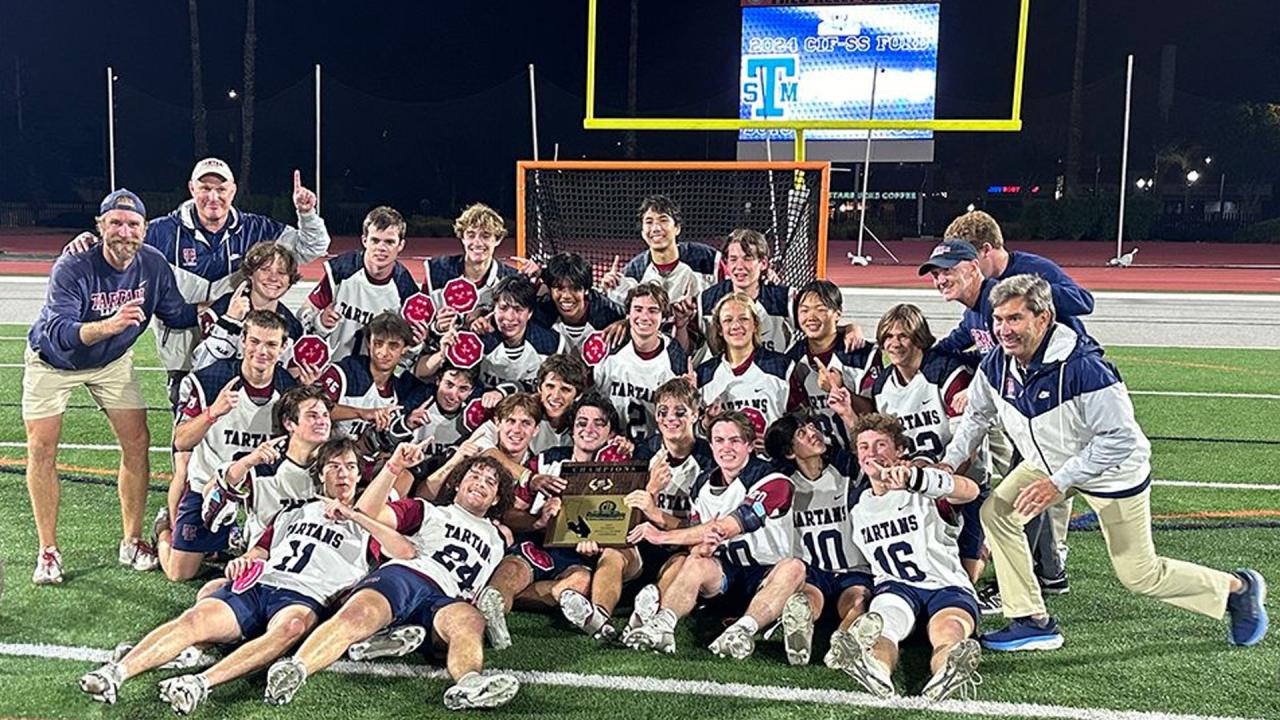
Munro, a former Division I head coach at Denver, has long advocated for free-play lacrosse as a developmental tool. After selling 3D Lacrosse in 2017, he began to reflect on the development of players under his tutelage.
“I was proud of a lot of the work we did, but what I was not satisfied with at all was the transfer of what I knew kids could do to what they actually did in games,” Munro said. “I’ve seen them do it. They can do it. Why aren’t they doing it? I started researching and learning about perception and action coupling, which is how you separate the skill from the decision. And that led me down this path of free play.”
Munro went on to work with his daughter, Lucy, who is now a junior at Northwestern, by taking her out of clubs and instead having her play pick-up with boys and girls. Munro began to film the games and noticed a change in his previous misgivings about player capability.
The same players he had coached a few years earlier began to do the things that he had known they were capable of doing but weren’t doing previously.
“I started noticing that these boys who were committed Division I players playing with high school freshmen girls were doing even more than I thought they could do,” Munro said. “I coached these guys for a long time. I knew what they did, and I knew what they were good at. They just did way more stuff. My theory was that if you can do something in a 3v3 game without someone telling you to do it that it sticks.”
If you’re looking for further evidence of free play developing high-level lacrosse skills and players, look no further than our neighbor to the north.
Canada has won multiple world titles with nearly one-tenth of the United States’ participants. The United States has over a million lacrosse players, while Canada has around 100,000. But if you look at the talent Canada produces for college and professional field lacrosse, as well as their impact on the world stage, it’s pound-for-pound and dollar-for-dollar better than the United States.
But box lacrosse isn’t free play. It’s fast-paced, violent and rewards extraordinary offensive skills. That’s true at the highest level of the indoor game. But youth players in Canada aren’t smashing their friends into the boards. They’re learning skills in a more confined space with a smaller goal, and they’re policed by coaches who encourage them to find their own way.
“Canada has produced some of the most skilled scorers in field lacrosse of all time,” Kelly said. “They produced the best field defenseman of all time. And they produced a goalie who has been a two-time finals MVP in field lacrosse. But they play hardly any field lacrosse. Yet we in America think it’s a smart model to have kids playing in 10, 15, 20 or more 10-v-10 field lacrosse tournaments a year. It’s insanity that we think this is optimal, right?”
Kelly suggests that the optimal learning environment is one in which coaches can provide guidelines and a safe environment for players to find solutions that ultimately breed skills.
It’s a notion shared by Munro as well.
“As far as development goes, there’s nothing that is going to get you better than free play,” Munro said. “It’s the same thing in basketball. Who gets good at basketball through private lessons and playing on AAU teams? You get good at basketball by playing endless pick-up hoops. If you have two people, you play 1v1. If you have three people, you play 21. If you have four people, you play 2v2. Kids have a hard time just playing. And it’s not their fault. Everything in their life has been structured. And a lot of times, that structure is done with good intentions. But they don’t understand how important it is for the kid to actually play.”
Youth sports aren’t being commodified. They already are. Club teams across the country offer youth training and teams to develop skills faster. That approach might work for some, but even elite-level coaching isn’t always going to produce results.
With a plethora of club teams opening their doors to younger and younger players, the opportunity to go that route is present. But club practices might interfere with the schedule of young players who want to try other sports outside of the spring.
“There’s so much money in youth sports right now,” Kelly said. “It’s wild. And it’s my opinion that it’s driving an environment for youth athletes that is not in line with the best way that they learn. Obviously, highly structured elite environments can still produce good players because they’re engaging in the sport in some capacity. However, we might be leaving some kids behind or burning kids out. There’s a lot of smart people out there who are starting to present evidence as to how that may be capping potential.”
How do we know free play even works? Aside from previous decades of highly skilled lacrosse players, there are more present examples of its success.
Like Sowers, now a fan favorite at the PLL’s Street Lacrosse events that have brought pros to city playgrounds in New York and Philadelphia to play pickup.
Even with all this goodwill, the concept of free play is still fighting against a juggernaut of profit. But it doesn’t have to be that way. Players can get their reps and fundamentals in with their school and club teams and still embrace the free-play model.
“I get it,” Kelly said. “It’s a really hard thing for a parent that has been sold their whole existence that things need to be very serious and very structured, or your kid is never going to make it.”
You don’t learn how to play lacrosse on a spreadsheet or by counting your reps. You learn by playing different iterations of the game. Free play is not just the most accessible gateway for new players. It can also be a learning tool for even the most experienced ones.
Kyle Devitte
Kyle Devitte played high school lacrosse at John Stark (N.H.) and Tilton Prep (N.H.) before embarking on a playing career at St. Michael's College and Clark University in the early aughts (oughts?). After graduating from Clark, he went on to coach lacrosse at NCAA Division II and III schools throughout New England for 12 years before becoming the Gear and Lifestyle Editor at Inside Lacrosse in 2014. He's the managing editor of the New England Lacrosse Journal and coaches at Hopkinton (N.H.) High School, where he helped the Hawks to a state championship in 2023.
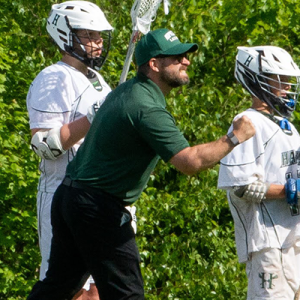
Categories
Tags
Related Articles
